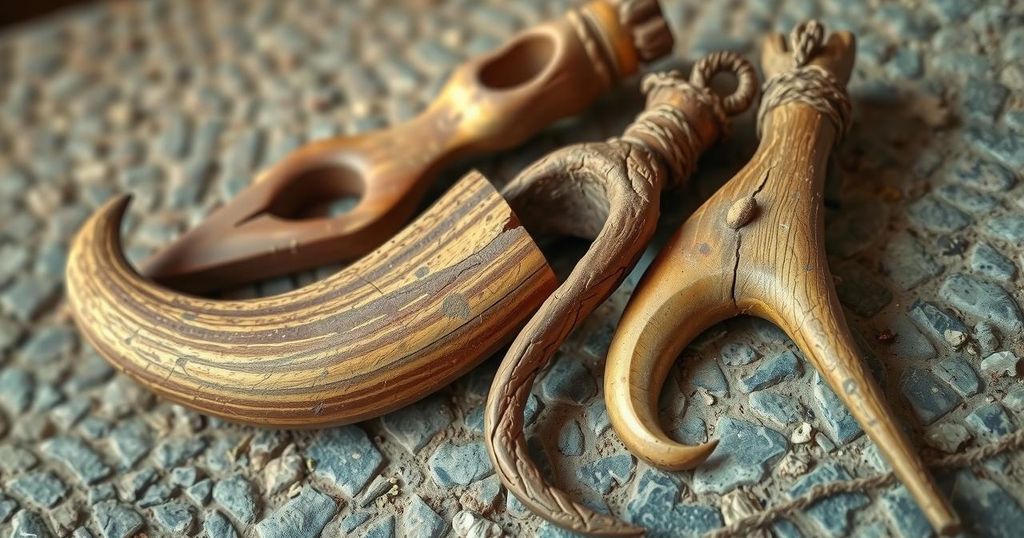Ancient human relatives crafted the oldest known bone tools around 1.5 million years ago in Tanzania’s Olduvai Gorge. These tools, made from hippo and elephant bones, represent significant evidence of early hominid tool production, possibly by *Homo erectus* or *Paranthropus boisei*. The findings suggest a technological evolution from stone to bone tools.
Researchers have discovered that ancient human relatives crafted bone tools approximately 1.5 million years ago, marking the oldest known evidence of systematic bone tool production by hominids. Excavations at Olduvai Gorge in Tanzania have unearthed 27 bone tools, fashioned from the bones of hippos and elephants. This significant finding was reported by archaeologist Ignacio de la Torre and his colleagues in Nature.
The bone artifacts could potentially have been created by either Homo erectus, a direct ancestor of modern humans, or Paranthropus boisei, a side-branch species that lived at the site during this period. Although stone toolmaking dates back as early as 3.3 million years ago, the production of bone tools is generally believed to have started around 500,000 years ago. Notably, earlier evidence of bone tools existed, such as a 1.4-million-year-old hippo leg bone that had been shaped into a tool.
Many of the implements, primarily pieces of leg bones from hippos and elephants, displayed signs of intentional modification, including pounding marks for sharpening. Some largest tools, made from elephant bones, measured up to 38 centimeters in length. Additionally, six of the tools exhibited carved notches potentially serving as grips, along with sharp points at the other end.
Archaeologists consider stone hand axes to be a key feature of the Acheulean tool tradition, which originated around 1.7 million years ago. “We believe that the Olduvai bone tools represent a technological transfer [by hominids] from stone to bone,” stated de la Torre, highlighting the significance of this transition in tool-making. Furthermore, the findings suggest that Olduvai hominids not only utilized hippo carcasses for sustenance but also selected bones for crafting tools. However, few elephant remains were found, indicating that the elephant-bone tools may have been sourced from different locations.
The recent findings from Olduvai Gorge indicate that human ancestors engaged in the production of bone tools around 1.5 million years ago, suggesting an advanced level of technological and cognitive development. This discovery challenges previous assumptions regarding the timeline of bone toolmaking and highlights the resourcefulness of early hominids in adapting materials for survival.
Original Source: www.sciencenews.org




